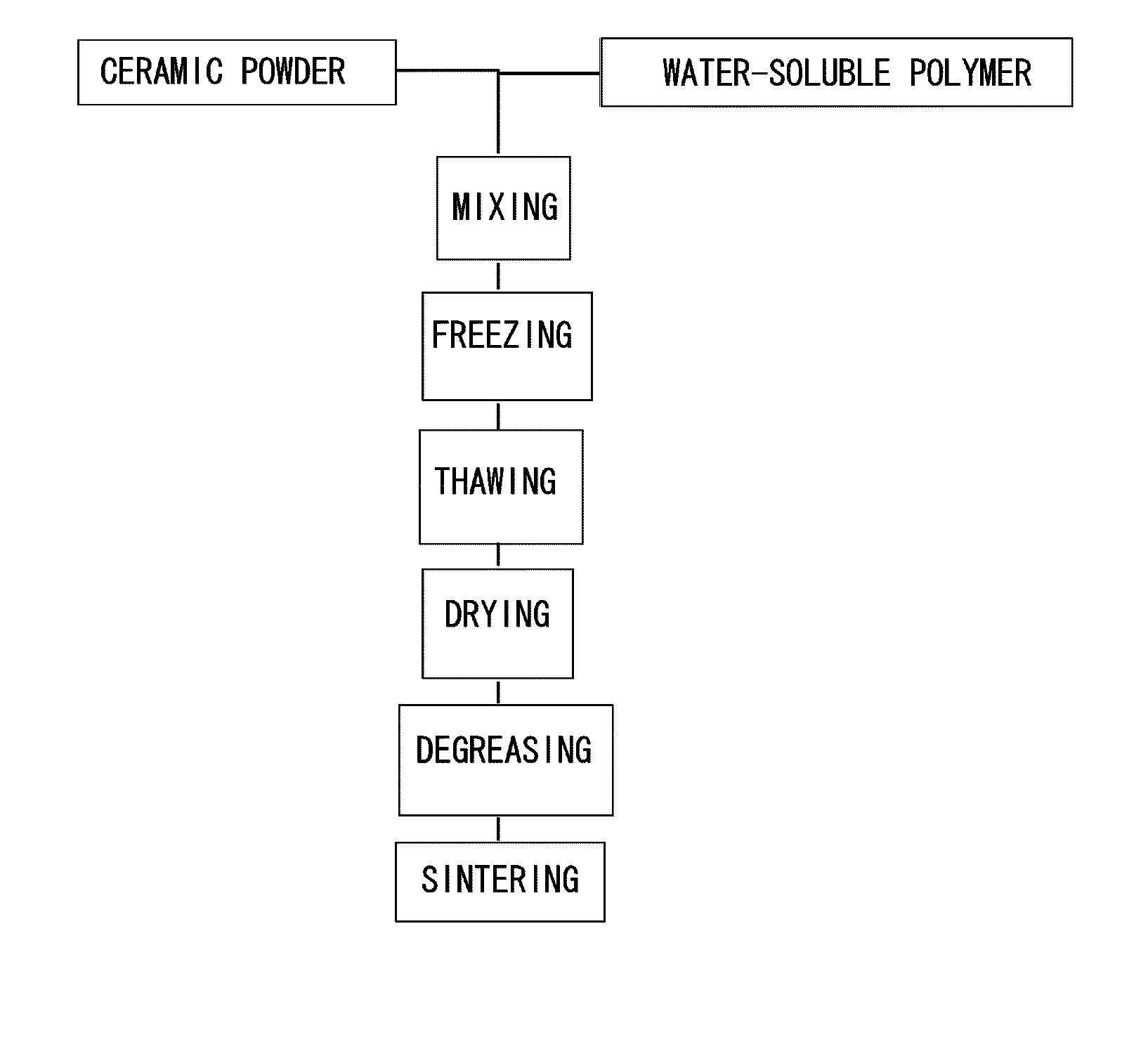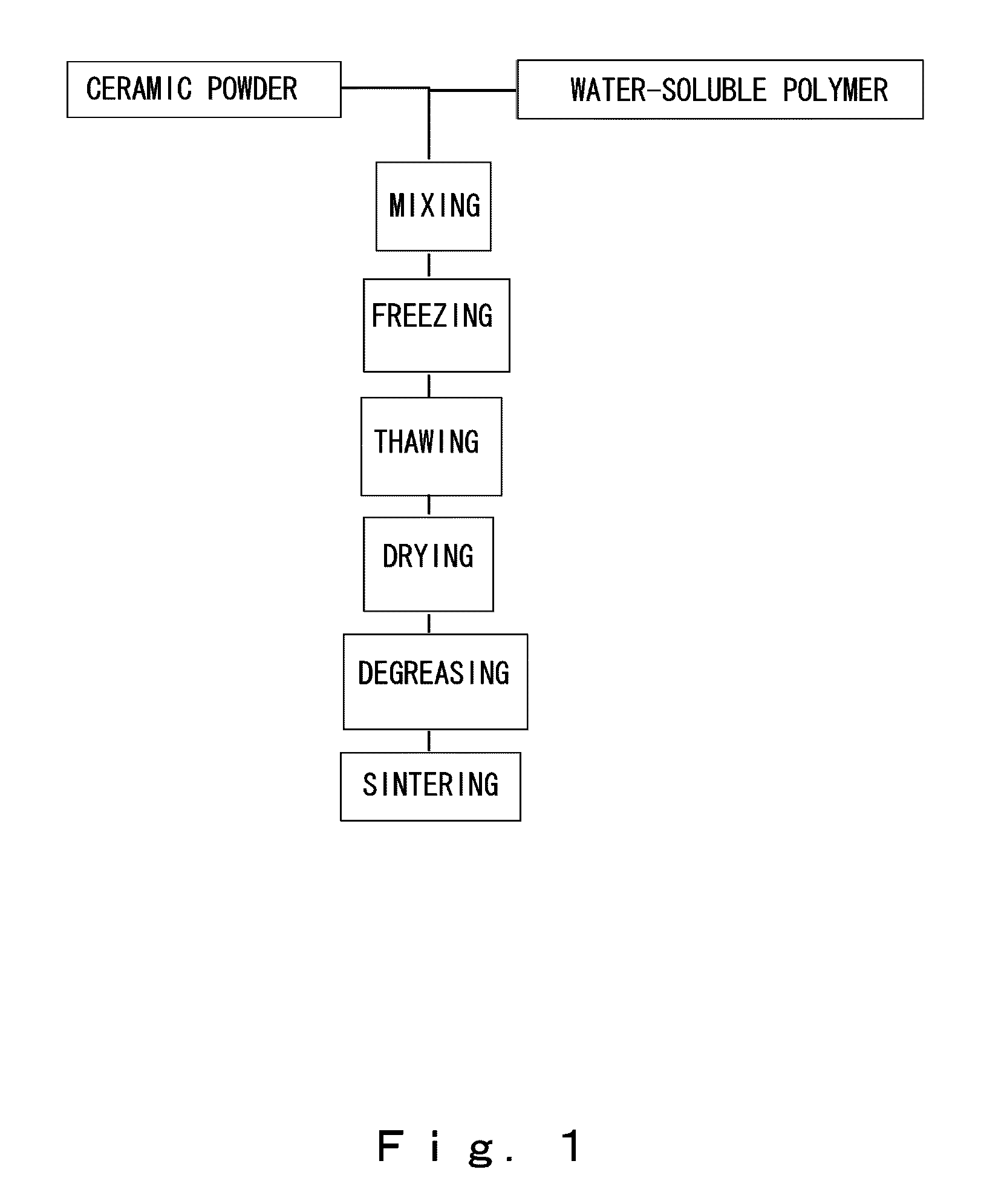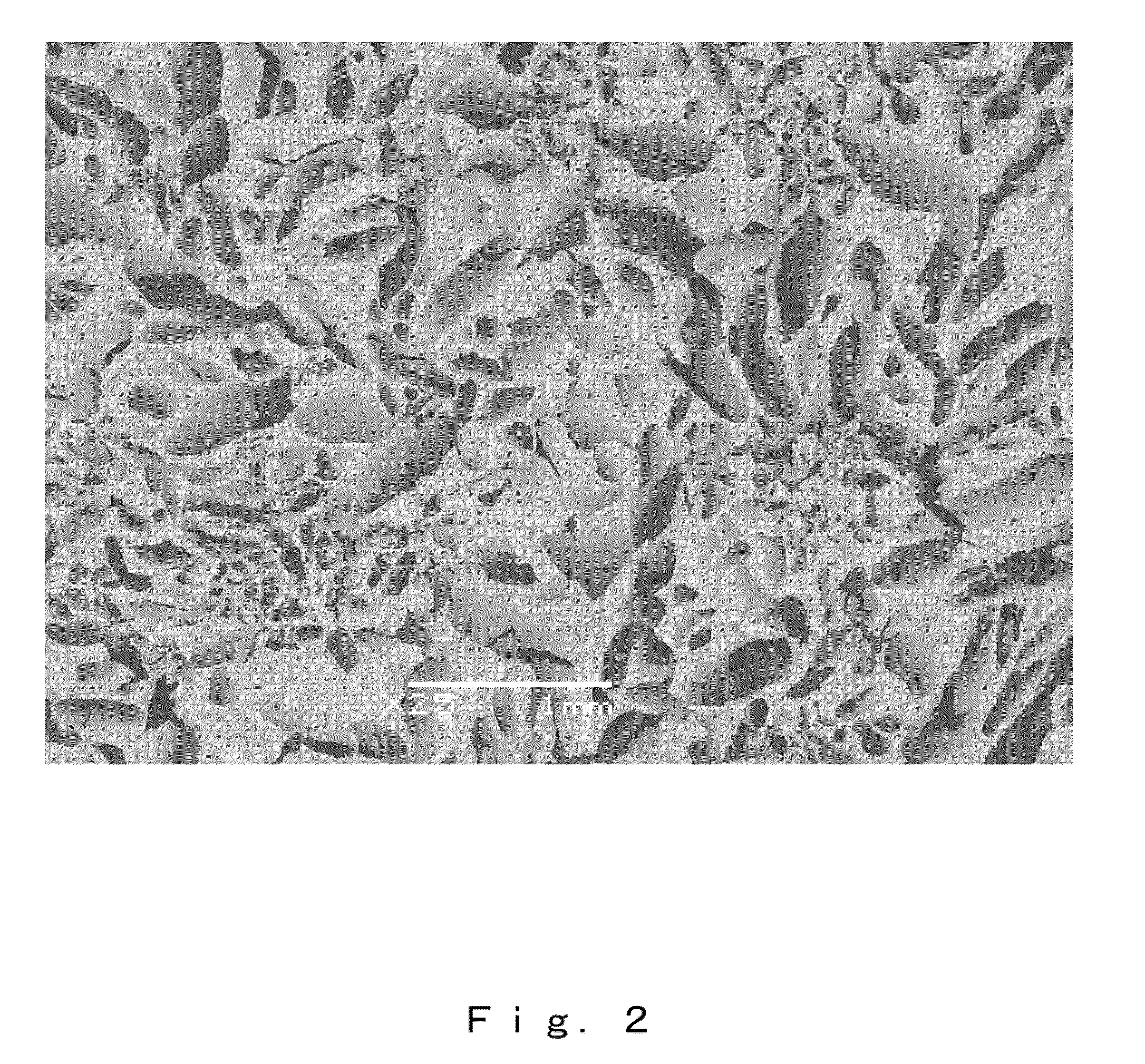Ceramic porous body with communication macropores and process for producing the ceramic porous body
a technology of ceramic porous body and macropore, which is applied in the direction of ceramicware, manufacturing tools, other domestic articles, etc., can solve the problems of poor strength, difficult control of the diameter and distribution of the pores, and difficult to produce porous bodies with high porosity
- Summary
- Abstract
- Description
- Claims
- Application Information
AI Technical Summary
Benefits of technology
Problems solved by technology
Method used
Image
Examples
example 1
[0063]11 vol % alumina powder (mean particle size 0.4 μm) was mixed with 84.5 vol % water to prepare a slurry to which were added a water-soluble polymer and crosslinking agent, and the slurry was gelled. Next, a mold filled with the gelled slurry was frozen by cooling in a freezer at −25° C. After freezing, this was dried by controlled atmospheric substitution-type drying method, degreased in a tubular furnace, and sintered for 2 hours at 1600° C. in an electric furnace. The resulting porous body had a porosity of 73%. Porosity was measured by the Archimedes method. FIGS. 2, 3 and 4 show partial vertical cross-sections of the ceramic porous body prepared in this example.
example 2
[0064]11 vol % zirconia powder (specific surface area 16 m2 / g) and a sintering aid were mixed with 84.5 vol % water to prepare a slurry to which were added a water-soluble polymer and crosslinking agent, and the slurry was gelled. Next, a mold filled with the gelled slurry was frozen by cooling in a freezer at −25° C. After freezing, this was dried by controlled atmospheric substitution-type drying method, degreased in a tubular furnace, and sintered for 2 hours at 1400° C. in an electric furnace. The resulting porous body had a porosity of 73%. FIGS. 5, 6 and 7 show partial vertical cross-sections of the ceramic porous body prepared in this example.
example 3
[0065]6 vol % of silicon carbide powder (mean particle size 0.3 μm) and a sintering aid were mixed with 92.1 vol % water to prepare a slurry to which were added a water-soluble polymer and crosslinking agent, and the slurry was gelled. Next, a mold filled with the gelled slurry was frozen by cooling in a freezer at −55° C. The frozen gel was removed from the mold, thawed in an organic solvent, degreased in argon atmosphere and sintered for 2 hours at 1800° C. The resulting porous body had a porosity of 89%. FIG. 8 shows a partial vertical cross-section of the ceramic body prepared in this example.
PUM
| Property | Measurement | Unit |
|---|---|---|
| porosity | aaaaa | aaaaa |
| diameter | aaaaa | aaaaa |
| freezing temperature | aaaaa | aaaaa |
Abstract
Description
Claims
Application Information
 Login to View More
Login to View More - R&D
- Intellectual Property
- Life Sciences
- Materials
- Tech Scout
- Unparalleled Data Quality
- Higher Quality Content
- 60% Fewer Hallucinations
Browse by: Latest US Patents, China's latest patents, Technical Efficacy Thesaurus, Application Domain, Technology Topic, Popular Technical Reports.
© 2025 PatSnap. All rights reserved.Legal|Privacy policy|Modern Slavery Act Transparency Statement|Sitemap|About US| Contact US: help@patsnap.com



